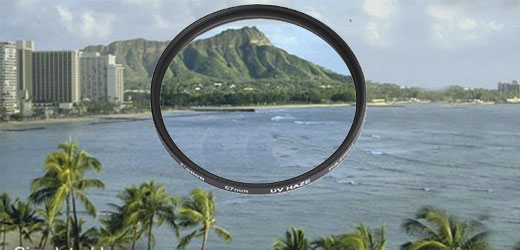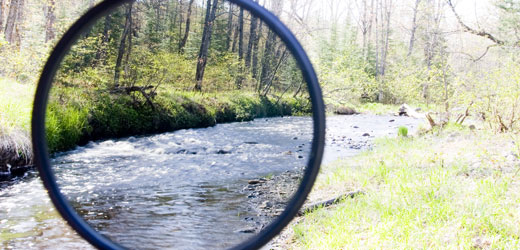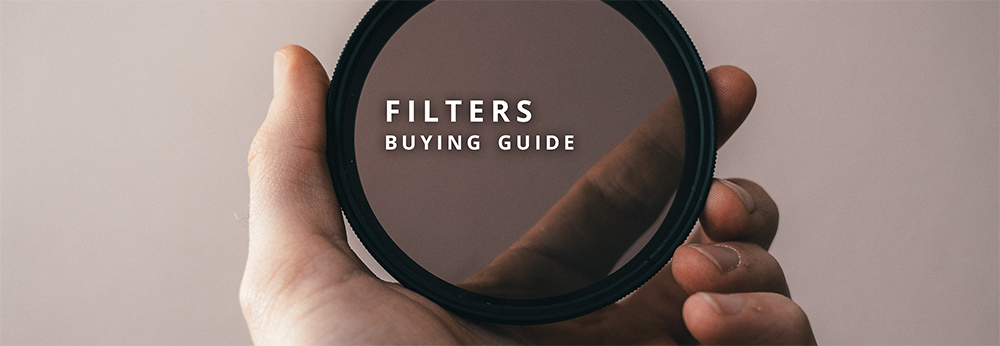Introduction
You have the perfect SLR or mirrorless camera and the lenses to go with it. You have been taking pictures for a while, and now you are wondering what else you could possibly do to add more flare and creativity to your photographs. Filters are the answer you have been looking for! A simple filter can produce brilliant effects through addition/elimination of color, polarization and other special effects. Filters are also used to protect the lens and increase its longevity.
Purpose of the Guide
This guide will give you a basic overview of different types of filters and their uses. Once you understand filter basics, it's easy to decide which filters best suit your needs and price range.
What is a Filter?
Filters are, like the name suggests, a filter for a spectrum of light that enters the lens. They come in various shapes and sizes, and can be used in a variety of ways. Filters fit in front of your camera lens. They may directly screw onto your lens, or you may be required to buy an attachment to fit onto the lens. The most common filter shape is round, but they can come in square (acetate) form as well. They can be made out of glass, resin or polyester. The lens specifications should provide the filter ring size.
Features of Filters
Filters come in two types, depending on how they are mounted on the lens: threaded (or screw type) and the drop in type.
Threaded
The threaded variety screws itself onto the front of the lens with the help of threads on the frame. They are the more common of the two, and finding one for your lens type should not be too much trouble, as they are readily available in camera stores (especially here at Unique Photo). A common disadvantage of these types of filters is that you will have to get a filter for each size of lens that you carry. This can be mitigated to an extent by using a step up or step down mount ring on your lens.
Drop In
The drop in filters come as square acetate plates that require a filter mount to attach to your lens. This style can be useful if you are using multiple cameras and lenses. Although they are bulkier than the screw variety, you will only need to purchase one of each type, as the mount will allow you to place it on any camera lens. They are also less robust and durable than the glass variety.
The ring that holds the filter in place can be made from brass or aluminum. The brass filter is much harder and more durable than the aluminum. Brass may prevent damage to the lens if there is an impact to the lens. However it may transfer the impact to the lens itself rather than the filter. Due to its hardness, it is almost impossible for the glass filter to become locked to the lens upon impact. Aluminum is softer, and this will allow it to distort upon impact, thus cushioning the lens but breaking the filter glass. The downside is that the broken glass from the filter will damage the lens, or the filter frame will fuse with the lens, which will require a special tool for removal.
Utilities of Filters
Filters can be used to play with glare, saturation, exposure time, light gradients, white balance and a lot more. Thus, it is essential for the photographer to understand the filter and its uses. Below are some of the filter types that are available in the market.
Ultraviolet (UV)/ Haze filters
UV lens filters are transparent filters that block UV rays. Their effect can be noticed in the slight purple fringe that is visible on the edges of a slightly out of focus subject. They are also used to remove the haze that is visible on outdoor daytime photography. The UV filters have such a minimal impact on photographs that they are mostly used for lens protection than anything else.
 UV Haze filters are useful in eliminating environmental haze from your shot.
UV Haze filters are useful in eliminating environmental haze from your shot.
Polarizing Filters
Polarizing filters are the most common type of filters. They eliminate reflections from water, glass and other reflective surfaces. They also enhance color and increase contrast. These features make it an excellent choice for landscape photography. They come in two varieties, and the onus lies on the photographer to make the right choice.
- Linear polarizing filters: These are used only for manual focus cameras.
- Circular polarizing filters: They can be used with both manual and autofocus cameras.
Light Colored and Gradient Filters
These filters affect the white balance of light entering the camera’s sensor. This ends up either ‘warming’ or ‘cooling’ the scene being captured. These types of lenses are less useful in the world of digital cameras and modern image editing software as their effects can be added later as well.
Neutral Density (ND) Filters
These filters reduce the amount of light entering the camera. This safely allows for reduction of the shutter speed. They are useful when creating motion blur effects or for controlling the contrast between highlights and shadows.
 Neutral Density Filter Effect
Neutral Density Filter Effect
Filters for Black and White Photography
Black and white photographs are converted by the camera from color. This leads to many interesting opportunities when it comes to filter manipulation. For example, a filter blocking red light will enhance the blues in the sky, giving it an ominous look. A green filter will darken the sky but brighten and increase the contrast of any vegetation present in the frame.
Special Effects Filters
Special effects filters apply special effects, like diffusion, sepia or infrared to the photograph. A few of them have been shown below:
Diffusion Filters
Diffusion filters are used to attain a soft, dreamy haze in photographs. They can also be used to control the contrast in harsh scenes. The filter is better at this than the image editing software.
Split-Filters
Technically considered a lens accessory but manufactured by filter manufacturers, these are used to give a close up to one half of a photograph while leaving the other half unaffected. Therefore, it is possible to have 2 objects in the same image with the same level of focus.
Rainbow Spot Filters
A rainbow spot filter diffracts all light into a rainbow, giving the image an extra flare.
Sepia Filters
As the name suggests, the sepia filter adds a sepia effect (reddish brown hue) to the photograph.
Star 4, 6, or 8 Filters
Star filters produce a star effect wherever there is a strong source of light. The numbers correspond to the number of points the star will contain. This can be used to accentuate jewelery or any other strong source of light or reflection.
Top 5 Manufacturers
Hoya is currently one of the largest filter manufacturers in the market. They have a large variety of filters, like, green line, purple line, High multi coated filters, and HD filters, with the last ones being the most expensive.
B+W is a large German company (Schneider Optics), known for their clarity, brass rings and optically clear Schott (Zeiss) glass. They are among the best known, and are very hardy and easy to clean. If budgetary constraints don’t apply to you, then this would be the best option.
Tiffen is an American company well known for their cinematic and photographic filters among other camera gear. They are cheaper than other brands, but perform just as well. Optically, they produce poorer results, giving rise to soft images. They also have issues with lens flare and chromatic aberrations.
Heliopan is another German manufacturer who uses Schott glasses exclusively, along with brass rings. While the quality of Heliopan is undeniable, their ratio of cost to return is diminishing, and the same job can be easily accomplished by a high end Hoya or B+W.
Canon needs no introduction to even the casual photographer. Apart from making world class cameras and lenses, they also produce a myriad of filters that will interest even the most adept photographer.
Terminology
A few terms that are important to understand in the world of filters:
- Polarization:
- The phenomenon in which waves of light or other radiation are restricted in direction of vibration.
- Sepia:
- A reddish-brown color associated particularly with monochrome photographs of the 19th and early 20th centuries.
- Diffusion:
- The spreading of light more widely.





